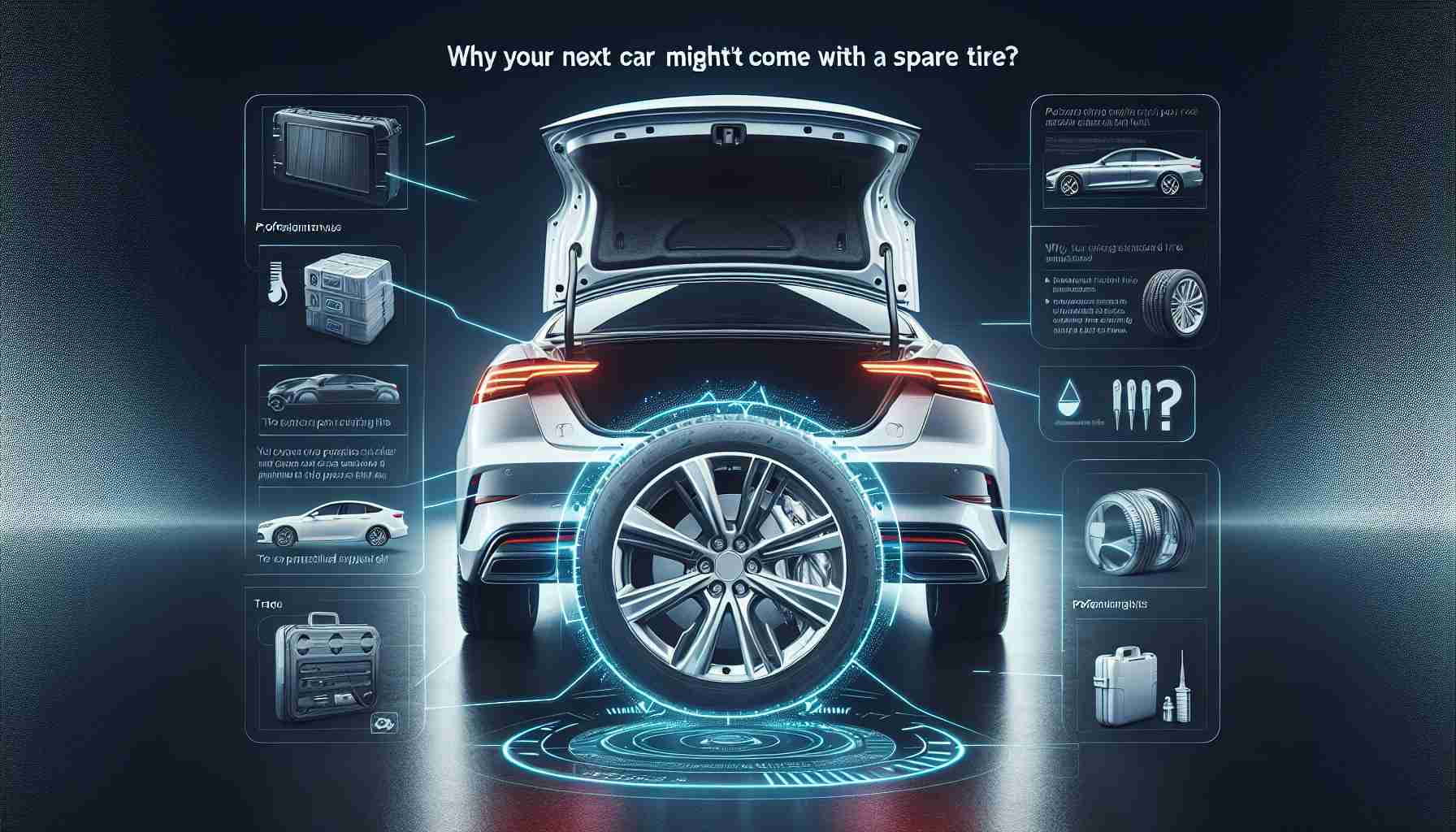- Modern vehicles are increasingly sold without traditional spare tires and tool kits to enhance fuel efficiency and cut costs.
- Run-flat tires and tire sealant kits are becoming common alternatives for mobility post-flat.
- Rising living costs are prompting consumers to reconsider new car purchases and explore the used car market.
- Lightly used vehicles can offer similar features and performance as new cars, often at a significantly lower price.
- Smart buyers are prioritizing practicality over flashy new models, leading to better financial decisions.
- Choosing a quality pre-owned vehicle can provide satisfaction without compromising on quality or breaking the bank.
Gone are the days when a new car was guaranteed to include a spare tire, jack, and tool kit, essentials for the roadside hero. Today’s vehicles are shedding these items in favor of fuel efficiency and cost-cutting measures. Automakers are opting for alternatives like run-flat tires that keep you rolling even when flat or handy kits with tire sealant and an air compressor.
But there’s more to this story than just tires. With the rising cost of living and a population increasingly wary of flashy new purchases, many are reconsidering what it means to buy a car. Instead of succumbing to the temptation of shiny new models, savvy buyers are discovering the hidden treasures of the used car market. These lightly used vehicles often boast similar features and performance as their brand-new counterparts, all while allowing you to keep some extra cash in your wallet.
Don’t let advertising tricks fool you into believing that spending beyond your means leads to happiness. Embrace the practical choice and you might just find that an effective way to beat the system is by opting for a quality pre-owned vehicle.
So, the takeaway? When searching for your next ride, explore lightly used options to save money and enjoy some peace of mind without sacrificing quality or features.
Revamped Choices: Why a Used Car Might Be Your Best Bet in 2023
The Shift in Car Purchasing Trends
The automotive industry in 2023 has seen a significant transformation, shifting away from new car purchases toward the used car market. Several factors drive this trend, including rising costs, economic uncertainty, and changing consumer preferences. Here’s a closer look at what’s happening in the car-buying landscape:
Market Trends
– Declining New Car Sales: Several reports indicate that new car sales are down by approximately 10% compared to previous years, as buyers opt for more financially responsible choices.
– Increased Demand for Used Cars: The used car market is thriving, with vehicles aged 1-3 years being particularly in demand due to their relatively low depreciation and reliability.
Financial Insights
– Affordability: The average price of a used vehicle is significantly lower than that of a new one, with many buyers saving thousands of dollars.
– Insurance Savings: Insurance premiums are often lower for used cars, providing further financial relief for consumers.
Alternatives to Traditional Spare Tires
– Emergence of Run-Flat Tires: Automakers are increasingly equipping vehicles with run-flat tires that allow drivers to travel a limited distance even after a puncture, thereby eliminating the need for traditional spare tires.
– Sealant Kits: Many new vehicles now come with tire sealant and compressors, which provide a quick solution for minor damage instead of a spare tire.
Key Questions Answered
1. Are there advantages to buying used cars over new cars beyond financial savings?
Yes, used cars typically come with lower rates of depreciation, resolve issues related to supply-chain delays in new cars, and often have established performance reviews available. Many used vehicles also come equipped with innovative features that match or exceed those found in some new models.
2. What are the potential drawbacks or risks of purchasing a used vehicle?
One risk includes the lack of the latest safety features or technological advancements found in newer models, which could be a concern for some buyers. Additionally, used cars may come with unknown histories regarding accidents or maintenance issues, reinforcing the importance of thorough inspections and obtaining vehicle history reports.
3. How important is it to consider resale value when purchasing a vehicle?
Resale value plays a crucial role in vehicle purchasing decisions. New cars depreciate rapidly, with new vehicles losing around 20-30% of their value within the first year. In contrast, used cars offer stability in depreciation rates, making them a safer investment for those concerned about long-term value.
Final Thoughts on the New Buying Paradigm
The current automotive landscape encourages buyers to rethink their purchasing choices. As consumer behavior shifts towards practicality and cost-effectiveness, the used car market presents an attractive alternative. The right lightly used vehicle can provide comparable performance, desirable features, and substantial savings, making it a smart choice in today’s economic climate.
If you’re contemplating purchasing a car, consider exploring the used car market where you can find quality options that align with your budget and preferences.
For more information on market trends and purchase advice, check out AutoTrader.















